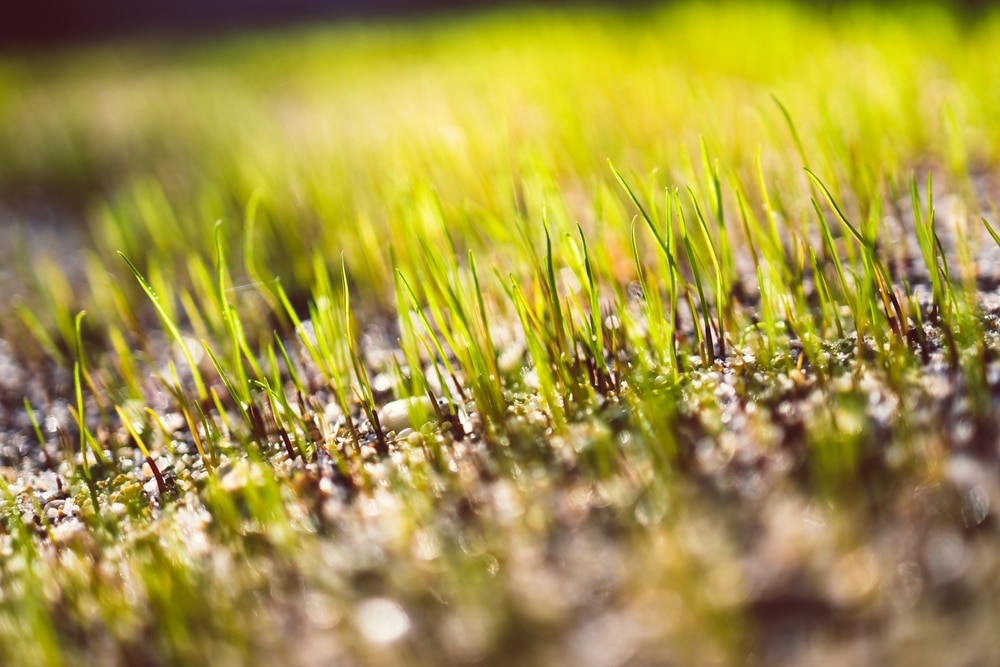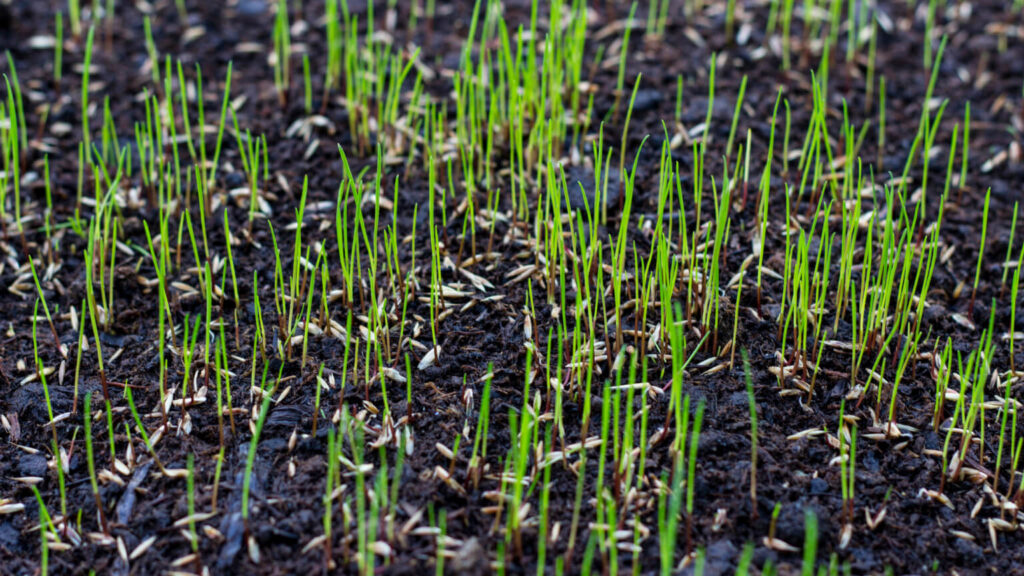
While it typically takes 10 to 14 days for grass seed to begin growing, it occasionally can take up to 30 days. It may seem like an eternity when you’re sowing new grass seed in your yard.
Table of Contents
Understanding Grass Seed Germination
After seeds are planted, it takes germination for grass to begin to grow. The length of germination will primarily depend on the kind of seed you use, but other factors, such as weather, season, and soil quality, also come into play. The length of time required for the germination of some of the most popular grass seeds is listed below.
- Annual Ryegrass: Although it grows quickly and is adaptable, this grass is not very cold tolerant. It usually takes five to ten days for it to germinate.
- Bentgrass: On golf course greens, this common perennial cool-season grass is frequently found. In just two weeks, it starts to sprout.
- Perennial Ryegrass: This grass is well-liked for lawns and does well with foot traffic. Even though it needs a lot of watering, it germinates quickly—in just five to ten days.
- Kentucky Bluegrass: It takes longer (between 14 and 30 days) for this hardy, cold-tolerant grass to germinate.
- Zoysia Grass: This is a well-liked warm-season grass that tolerates drought and does well with foot traffic. However, zoysia takes longer to germinate, usually taking between 14 and 21 days.
- Red Fescue: It grows well in the shade and needs little water. This grass is a cool-season variety. It takes between 7 and 14 days for it to germinate.
Factors That Affect How Long It Takes Grass To Grow
Type Of Grass Seed
Naturally, the type of grass seed you use will determine how long it takes for it to grow. The majority of grass seed planted here in Northeast Ohio is what is known as cool-season grasses. Between 60 and 75 degrees Fahrenheit are ideal growing conditions for that kind of grass seed.
Kentucky Bluegrass, Bentgrass, Ryegrass, and Fescue are a few of the most prevalent cool-season grasses in Northeast Ohio.
When the plants aren’t exposed to the summer’s frequently extreme heat and drying conditions, early spring or fall are the ideal times to plant cool-season grasses.
Full Sun
Full sunlight is ideal for grass growth. As soon as the grass seeds germinate, the tiny leaves start converting the sunlight’s energy into growth-promoting deep roots and lush leaves. The growth of grass plants is rapid and full when there is adequate light. The lawn will grow sparsely if there is too much shade. Prior to sowing grass seed, confirm that the area receives at least 6 hours per day of direct, full sunlight; if this is not possible, choose a shade seed mixture.
The Appropriate Time Of Year
Depending on the type of seed you use, you should consider when to plant grass seed.
- To give your lawn plenty of time to establish itself before the weather warms up, plant cool-season grasses when it’s cool outside and expected to stay that way for a few months. That means late summer or fall for many of us, or possibly later winter. It represents spring to some.
- On the other hand, warm-season grasses need to be planted in the late spring or early summer. They take a long time to germinate, and a late cold snap should not delay that process. However, don’t linger too long! Before the first frost in the fall, these heat seekers need to be well established.

Weather
How long it takes grass to grow can be influenced by the weather. Cooler than usual temperatures and overwatering from heavy spring rains are two of the most frequent factors that slow down grass growth.
It’s a good idea to look at the long-range forecast before planting even though you can’t always avoid heavier rain or cooler-than-normal temperatures.
As previously stated, Northern Ohio’s cool-season grass thrives in temperatures between 60 and 75 degrees Fahrenheit. You might get better results if you plant during these conditions.
Germination
The germination period affects how long grass seed takes to grow. A seed developing into a plant is known as germination. Different types of grass seeds require different amounts of time to sprout or germinate.
- Ryegrass: Ryegrass seeds usually grow in 5-10 days
- Kentucky Bluegrass: Kentucky Bluegrass seeds usually grow in 14-30 days
- Bentgrass: Bentgrass seeds usually grow in 10-14 days
- Fescue: Fescue seeds usually grow in 7-14 days
Soil Conditions
Keep an eye on your grass’s soil conditions in addition to the perfect weather. The time it takes for grass to grow can be impacted by the pH of the soil. The pH range of 6.0 to 7.2 is ideal for cool-season grasses.
Water your soil a few days before adding grass seed to try to provide your grass with the best watering conditions possible. Fill the ground with water until it is six to eight inches deep. If rain isn’t keeping the soil moist, water your grass seed once or twice daily after planting.
And don’t forget to keep an eye out for yard pests. These animals can prevent grass from growing. To help your grass grow more quickly, keep hungry pests and destructive bugs away from sensitive grass seeds.
Do your homework before planting the seeds. Make sure you have the best seed for your climate and location in order to achieve the best results. Additionally, you must pay attention to the many little factors that can promote seed germination, including your soil, the weather outside, and routine watering. If unsure, consult a local nursery expert or your neighbors who may have previously planted grass seed. It’s always better to have two local minds than one.